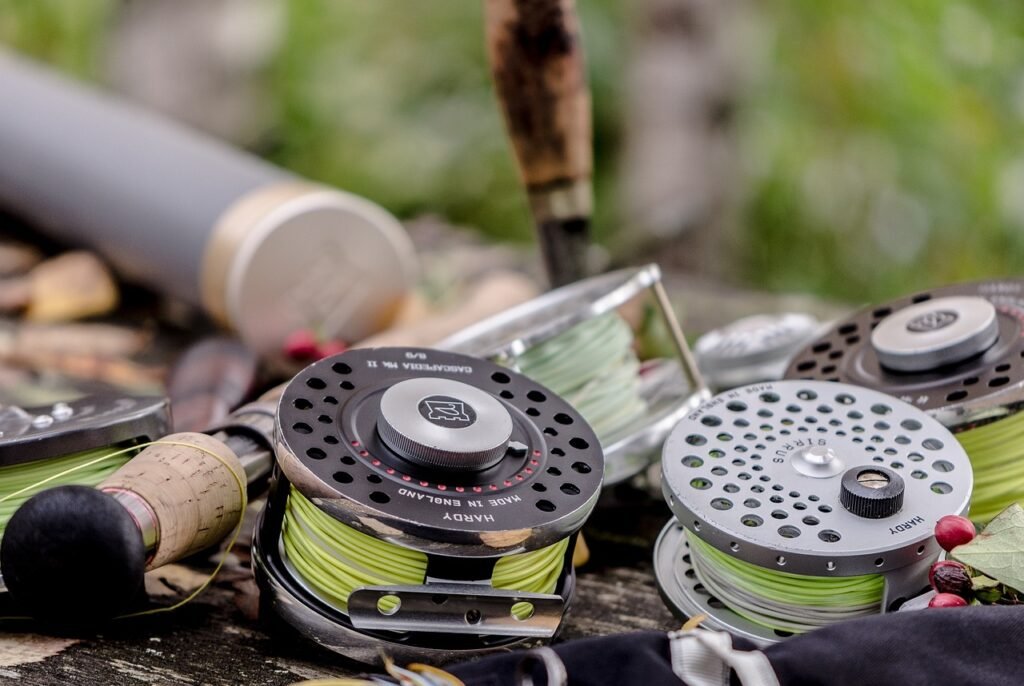Shoreline fishing offers unparalleled access to quality angling without needing a boat. Whether you’re targeting bass in local ponds or catfish in river systems, perfecting your bank fishing techniques can yield impressive results. This comprehensive guide combines essential gear knowledge with advanced location strategies, helping both novices and seasoned anglers improve their shoreline success rates.
Table of Contents
Fish in shoreline areas become wary of human presence quickly. Wear natural-colored clothing that blends with your surroundings and approach the water’s edge with slow, deliberate movements. A 7-9 foot rod allows longer casts that keep your profile farther from feeding zones.
Three casting methods dominate successful bank fishing:
- Parallel presentations: Keep lures moving along weed lines where bass ambush prey
- Structure targeting: Pitch jigs directly into submerged timber pockets
- Depth variations: Use Carolina rigs to explore bottom contours
Choosing between live bait and artificial lures depends on target species and water conditions. Nightcrawlers and minnows remain top choices for panfish, while soft plastic worms in natural colors (green pumpkin, watermelon) consistently produce bass in vegetated areas. During summer mornings, topwater frogs create explosive strikes near lily pads.
Seasonal changes demand bait adjustments. Spring spawn periods call for spinnerbaits in shallow bays, while winter months require slow-presented jigs in deep channels. For catfish enthusiasts, cut shad or chicken liver on circle hooks proves irresistible near river bends. Bass Pro seasonal bait guide offers detailed monthly recommendations.
Medium-heavy spinning combos (6’6″-7’6″) handle most shoreline situations. The Ugly Stik GX2 provides excellent durability for beginners, while the St. Croix Triumph series offers sensitivity for experienced anglers. Baitcasting setups shine when targeting heavy cover with jigs or frogs.
Build your shoreline kit with these fundamentals:
- Assorted circle hooks (Size 2-6/0)
- Bullet weights (1/8 oz – 1 oz)
- Slip bobbers for depth adjustment
- Polarized sunglasses for spotting fish
Productive bank fishing spots share common features: access to deep water, abundant cover, and baitfish presence. Target secondary points extending into lakes, areas below dam outflows, or creek channel bends in rivers. Public parks with fishing piers often provide excellent access to underfished waters.
Notable destinations include Lake Fork’s extensive shorelines for trophy bass and the Columbia River’s back channels for migrating salmon. Use Fishbrain’s crowd-sourced data to discover local hotspots and recent catch reports.

Landing lunker fish requires specialized approaches:
- Upgrade to 20-30 lb braided line for structure-heavy areas
- Night fish with glow-in-the-dark bobbers and live bait
- Focus on transitional periods (dawn/dusk/moon phases)
Patience proves crucial when targeting trophy fish. Allow baits to sit longer in promising areas and watch for subtle line movements indicating cautious bites. Bassmaster’s big fish guide details advanced techniques.
Always check local regulations via Take Me Fishing before casting. Carry a basic first-aid kit and wear sturdy footwear when navigating rocky shorelines. Practice catch-and-release with trophy fish using rubber nets and proper handling techniques.
Mastering these bank fishing techniques transforms casual outings into productive sessions. Remember to adapt to daily conditions, keep a detailed fishing journal, and continually refine your approach. With the right combination of stealth, gear, and location knowledge, your next personal best catch awaits just beyond the bank.












Leave a comment